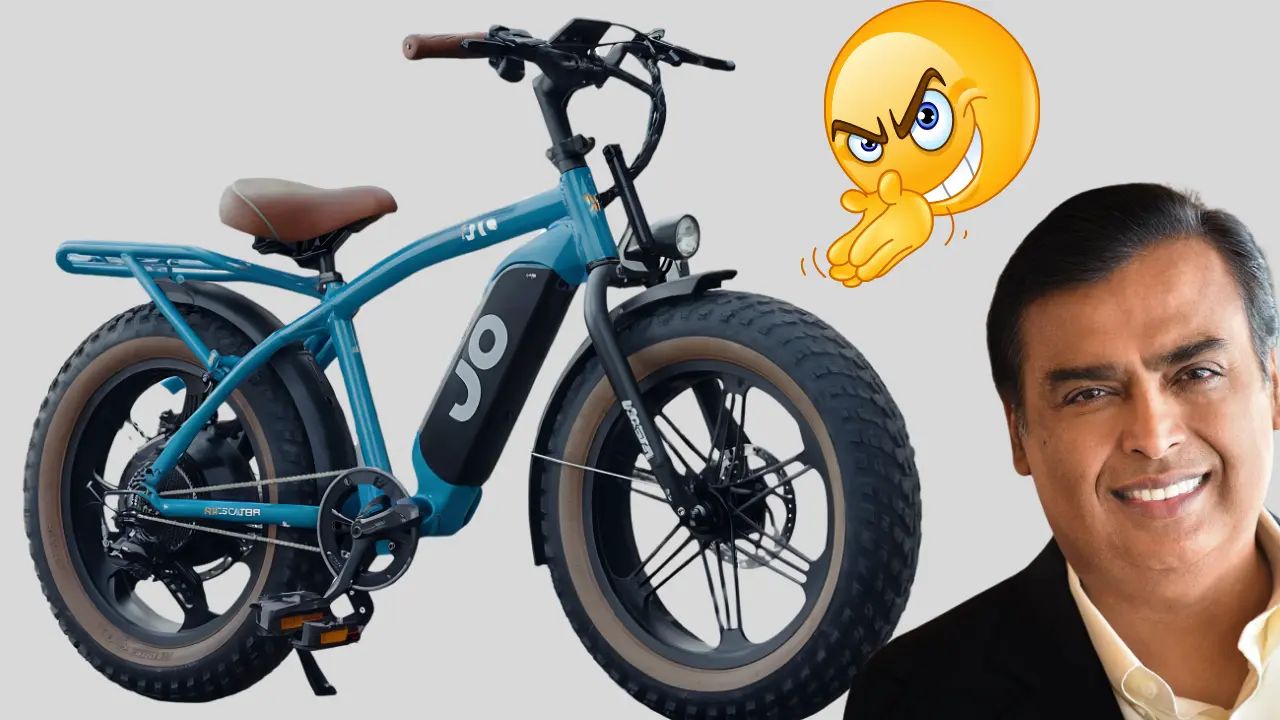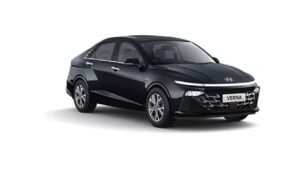India is witnessing a significant shift toward electric mobility, fueled by rising fuel prices, environmental concerns, and increasing urban congestion. The electric two-wheeler market, in particular, has seen exponential growth in recent years, with several players introducing a wide variety of models to meet the evolving needs of consumers. In this context, recent reports suggest that Reliance Jio, known for its disruptive impact on the telecom and digital sectors, may venture into the electric mobility space with the launch of the Jio Electric Cycle in 2025. If these reports turn out to be true, the Jio Electric Cycle could be a game-changer, especially for college students and urban commuters looking for a sustainable and affordable mode of transportation.
Jio Electric Cycle: What We Know So Far
While there has been no official confirmation from Reliance Jio regarding the launch, multiple industry insiders and news sources suggest that the company is indeed working on a new electric cycle. The project appears to be aimed at offering a low-cost yet highly efficient alternative to conventional petrol-powered scooters, with a special focus on students and daily commuters.
1. Battery Capacity and Range
One of the most talked-about features of the upcoming Jio Electric Cycle is its expected range. Reports suggest that the cycle may offer an impressive 400 km per charge—a figure that would position it far ahead of most current electric scooters and e-bikes available in the market. The cycle is likely to be powered by a high-capacity lithium-ion battery known for its energy density, long life, and fast-charging capability. If accurate, this range would make the Jio Electric Cycle suitable not just for short commutes but also for longer rides without frequent recharges.
2. Fast Charging Capability
Charging infrastructure continues to be one of the major roadblocks in India’s transition to electric mobility. To address this, the Jio Electric Cycle is rumored to support fast-charging technology. Fast charging could reduce charging time to as little as 3 to 5 hours, while regular charging through home sockets may take approximately 6 to 8 hours. If paired with Reliance’s potential investment in charging infrastructure, the cycle could become a viable option even in semi-urban and rural areas.
3. Smart Features and Digital Integration
Being a Reliance Jio product, it is expected that the electric cycle will come loaded with digital features. A fully digital instrument cluster may display real-time data such as speed, battery level, distance covered, and remaining range. The electric cycle could also feature GPS navigation, Bluetooth connectivity, and integration with a mobile app. This app could allow users to locate their cycle, monitor performance, and even receive alerts for maintenance and battery status.
4. Motor and Performance
As per current expectations, the Jio Electric Cycle will be equipped with a 250W to 500W electric motor. This motor size would make it suitable for urban environments where speed is less of a priority than efficiency and safety. Additionally, the inclusion of pedal-assist functionality would give users the flexibility to either ride traditionally or switch to electric mode. Such hybrid functionality would extend battery life and offer greater control.
5. Regenerative Braking Technology
Another anticipated feature is regenerative braking, a system that recaptures energy during braking and stores it back into the battery. While this technology is common in electric cars and high-end e-bikes, its incorporation into an affordable electric cycle would be a noteworthy achievement and could significantly improve energy efficiency.
Jio Electric Cycle vs Petrol Scooters: A Comparative Look
With fuel prices touching new highs, electric mobility options are becoming increasingly attractive. Here’s how the Jio Electric Cycle is expected to stack up against traditional petrol-powered scooters:
| Feature | Jio Electric Cycle (Expected) | Petrol Scooter |
|---|---|---|
| Range | 400 km per charge | 50-60 km per liter |
| Fuel Type | Electric | Petrol |
| Charging/Fueling Time | 3-5 hours (fast charge) | Few minutes |
| Cost Per KM | ₹0.10 – ₹0.15 | ₹2 – ₹3 |
| Maintenance | Low | High |
| Smart Features | Likely included | Limited or none |
| Emissions | Zero | High |
While the electric cycle may not match the speed and refueling ease of petrol scooters, it clearly offers significant savings on fuel costs and is a more environmentally friendly option. For daily commuters and students, especially in urban areas, the trade-off could be well worth it.
Potential Impact on Indian Urban Mobility
If successfully launched, the Jio Electric Cycle could influence urban mobility in several important ways:
1. Affordable Daily Commuting Affordability is key to the mass adoption of electric vehicles. The estimated price of the Jio Electric Cycle is expected to range between ₹30,000 and ₹50,000. This pricing would make it accessible to a large segment of the population, particularly students and working professionals. Combined with low running and maintenance costs, the electric cycle could be a compelling proposition.
2. Reduced Fuel Consumption India remains heavily dependent on imported petroleum products. The widespread adoption of electric cycles could significantly reduce this dependency, leading to economic and environmental benefits. A shift to electric mobility could also help stabilize the country’s fuel import bills in the long run.
3. Need for Charging Infrastructure For any electric vehicle to succeed, a robust charging infrastructure is essential. Reliance Jio, with its expansive reach and investment capability, could play a major role in setting up charging stations or battery-swapping kiosks. Such an initiative could further accelerate the adoption of electric cycles across the country.
4. Environmental Benefits With zero tailpipe emissions, electric cycles present a greener alternative to petrol scooters. Widespread adoption could lead to improved air quality, especially in cities battling air pollution. It could also contribute to India’s broader climate goals and commitments to reduce carbon emissions.
Challenges to Consider
While the Jio Electric Cycle holds a lot of promise, certain hurdles need to be addressed:
- Charging Accessibility: Many areas still lack proper EV charging stations.
- Battery Longevity: Lithium-ion batteries degrade over time and can be expensive to replace.
- Performance in Indian Conditions: The cycle must be durable and reliable across various terrains and weather conditions.
Frequently Asked Questions (FAQs)
Q1: When is the Jio Electric Cycle expected to launch?
A: Although there is no official announcement, the expected launch timeline is sometime in 2025.
Q2: What will be the approximate price?
A: Reports suggest it could be priced between ₹30,000 and ₹50,000, depending on the model and features.
Q3: Will the cycle have smart features?
A: It is expected to include GPS, mobile app support, and a digital dashboard.
Q4: Can the battery be removed for charging?
A: While not confirmed, the battery may be designed to be removable for convenient home charging.
Q5: How will it compare with a petrol scooter?
A: While it may have lower top speeds, the Jio Electric Cycle could offer significantly lower running costs and zero emissions.
Conclusion
The Jio Electric Cycle 2025 has the potential to revolutionize the electric mobility market in India. With features such as a 400 km range, smart connectivity, fast charging, and an affordable price tag, it is poised to be a practical choice for daily commuters and students. However, its real-world success will depend on infrastructure readiness, competitive pricing, and the ability to deliver on the promised features.
As India continues to transition towards sustainable transport solutions, the entry of a giant like Reliance Jio into the electric vehicle market could mark a pivotal moment in the country’s EV journey.




